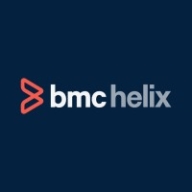


Red Hat Ansible Automation Platform and BMC TrueSight Server Automation are enterprise-grade automation tools with distinct attributes in the automation category. Red Hat Ansible Automation Platform has an upper hand in usability and cost-effectiveness, while BMC TrueSight Server Automation offers a more comprehensive feature set and better control.
Features: Red Hat Ansible Automation Platform is recognized for its simplicity, integration capabilities, and ease of use. BMC TrueSight Server Automation is noted for its depth in server management, extensive policy compliance, and robust performance capabilities.
Room for Improvement: Red Hat Ansible Automation Platform could benefit from enhancements in documentation, scalability, and support resources. BMC TrueSight Server Automation needs improvements in workflow streamlining, tool integration, and operational efficiency.
Ease of Deployment and Customer Service: Red Hat Ansible Automation Platform users find deployment straightforward with adequate customer support. BMC TrueSight Server Automation has a steeper learning curve during deployment and mixed reviews on customer support efficiency.
Pricing and ROI: Red Hat Ansible Automation Platform has a more accessible setup cost, appealing to budget-conscious organizations. BMC TrueSight Server Automation's higher initial cost is justified by its comprehensive functionality and long-term ROI.
Everything we've gained from it makes my job easier day after day, and I see value in it as an engineer.
Microsoft Intune not only saves costs by reducing the number of personnel needed but also offers a comprehensive solution for managing laptops, applications, security, individual access, and enrollment.
Importantly, when someone leaves the company, it helps protect document access on their devices.
When a support ticket is submitted, it directly reaches someone with Intune support expertise.
When I contacted Microsoft, they had the same expertise, if not more, which is phenomenal because I felt heard and my problem was solved.
Sometimes, the support provided is excellent, and the representative is knowledgeable, while other times, the service needs improvement.
The Ansible sales and technical support services need significant improvement.
I have not escalated any questions to the Red Hat support team regarding Red Hat Ansible Automation Platform, as their modules are professional and complete.
The scalability of Microsoft Intune is ten out of ten.
Ideally, we want to automatically segregate devices based on user properties like primary use, but currently, dynamic groups seem limited to device properties.
It supports organizations with 200 endpoints and those with more than 15,000 endpoints.
Ansible can face scalability issues, such as limitations when trying to scale up infrastructure.
We have not experienced downtime, bugs, or glitches.
It appears Microsoft Intune undergoes changes without informing customers.
Microsoft Intune has been very stable.
The stability of Red Hat Ansible Automation Platform is excellent, deserving a 10 out of 10 rating.
Features like unlocking devices sometimes fail, and the support offered for other operating systems is insufficient.
There are communication issues, so you might start working with a feature without knowing if it will be deprecated six months from now.
Many third-party companies offer single-pane-of-glass reporting that shows you what your update environment looks like, how your patch is doing, application status, etc., but Intune's reporting is not intuitive.
The dashboarding capabilities should be improved by bringing CMP (Cloud Management Platform) into Red Hat Ansible Automation Platform.
Red Hat Ansible Automation Platform could improve by creating modules for upcoming AI and ML tech stacks.
More library support for microservices architecture and Kubernetes would be helpful.
Introductory professional services, like a fast-track service, were included with our E5 membership, and there have been no additional costs.
The Intune suite and add-ons, such as batch management and remote help, are costly.
It costs approximately forty euros per user per month.
The pricing is high, and since I'm not using all functionalities, it would be better if the price depended on the functionalities used.
The cost of combining Red Hat Developer Hub and Ansible is extremely high, which presents a significant challenge with the Red Hat product.
It is free and open-source for testing or small labs.
Intune excels in configuration and compliance management for Windows 10, ensuring devices receive timely updates and adhere to organizational standards.
Dynamic groups allow us to set conditions for automatic membership, eliminating the need for user intervention or manual review and ensuring a seamless workflow.
Windows Autopatch is the most valuable because it removes the burden of patch management.
The overall role of BMC TrueSight Server Automation in managing configuration drift brings return on investment through its automation, which helps save me the time and effort of my operations team.
The agentless architecture of Red Hat Ansible Automation Platform, using the SSH key, makes it passwordless and allows us to push configurations with one click, creating a major advantage.
The automation capabilities streamline deployment processes, providing reliability and reducing manual intervention and errors.
It makes it simple to develop Ansible playbooks and roles, which aids in simplifying my daily administrative tasks.
| Product | Market Share (%) |
|---|---|
| Red Hat Ansible Automation Platform | 16.0% |
| Microsoft Intune | 9.4% |
| BMC TrueSight Server Automation | 3.1% |
| Other | 71.5% |



| Company Size | Count |
|---|---|
| Small Business | 116 |
| Midsize Enterprise | 46 |
| Large Enterprise | 152 |
| Company Size | Count |
|---|---|
| Small Business | 2 |
| Midsize Enterprise | 5 |
| Large Enterprise | 15 |
| Company Size | Count |
|---|---|
| Small Business | 24 |
| Midsize Enterprise | 8 |
| Large Enterprise | 48 |
Microsoft Intune provides centralized management of mobile devices and applications, ensuring security, compliance, and productivity through integration with Microsoft services like Microsoft 365 and Azure Active Directory.
Organizations use Intune for managing mobile devices and applications, enhancing security and compliance across platforms. With features like single sign-on, conditional access, and zero-touch deployment via Autopilot, it facilitates efficient operations. Intune's scalability, easy enrollment, and capabilities such as remote wipe support diverse device management, offering robust data protection and efficient operation. Despite its features, improvement areas include reporting, compatibility with non-Microsoft devices, and better support for macOS and Linux devices.
What are the key features of Microsoft Intune?
What benefits should users look for in reviews?
In industries such as finance, healthcare, and education, Microsoft Intune is implemented to ensure secure and compliant device management. Companies leverage its capabilities to deploy security policies and manage both corporate-owned and BYOD environments, facilitating a unified approach to data protection and compliance.
BladeLogic Server Automation allows you to quickly and securely provision, configure, patch, and maintain physical, virtual, and cloud servers.
· Threat remediation: Combine with BMC SecOps Response Service to link vulnerabilities to identified patches and create a remediation plan
· Compliance: Integrates role-based access control, pre-configured policies for CIS, DISA, HIPAA, PCI, SOX, NIST, and SCAP, documentation, and remediation
· Provisioning: Supports unattended installs and image-based, script-based, or template-based provisioning
· Configuration: Consistently manage change and configuration activities across a broad range of server environments with one tool
· Reporting: Assess change impact or complete an audit using multiple dashboard views
· Patching: Supports and follows maintenance window guidelines to ensure timely delivery of patches
Red Hat Ansible Automation Platform is a powerful network automation solution that allows organizations to handle every aspect of their application launch process within a single product. It enables users to share their automations so that teams within an organization can collaborate on various projects with ease. Ansible Automation Platform is designed to be used by all employees involved in the network automation process.
Red Hat Ansible Automation Platform Benefits
Some of the ways that organizations can benefit by choosing to deploy Red Hat Ansible Automation Platform include:
Red Hat Ansible Automation Platform Features
Reviews from Real Users
Red Hat Ansible Automation Platform is a highly effective solution that stands out when compared to many of its competitors. Two major advantages it offers are its automation manager and its comprehensive centralized GUI-based management interface.
MD J., a solution architect at STBL, says, “The automation manager is very good and makes things easier for customers with multi-cloud platforms.”
Aankit G., a Consultant at Pi DATACENTERS, writes, “We like the GUI-based interface for the tower. Before, we only had a command-line interface to run all the Ansible tasks. Now, the Ansible tower provides the complete GUI functionality to run, manage, and create the templates and the Ansible jobs. This includes the code and YAML file we can create. The GUI interface is the added advantage of this solution, including some integration with the different plugins.”
We monitor all Configuration Management reviews to prevent fraudulent reviews and keep review quality high. We do not post reviews by company employees or direct competitors. We validate each review for authenticity via cross-reference with LinkedIn, and personal follow-up with the reviewer when necessary.